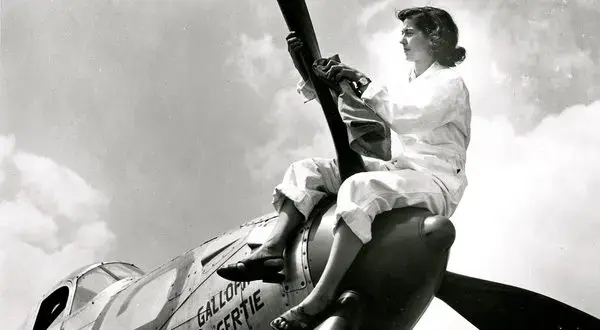Born to Fly!
- Margaret M. Kirk
- Jun 25, 2023
- 3 min read
They Roared is finally in print. It is available through Amazon, and by the end of the month, locally.
It has been an incredible journey but one of love. Love and admiration for these amazing women. The following is an excerpt from one of the chapters. I hope you enjoy, and happy weekend!

Elizabeth “Betty” Haas was born in Great Neck, Long Island, New York, on July 23, 1921. She knew she wanted to fly from a very young age. In 1940, the family went to an air show in Bennington, Vermont. When Betty expressed an interest in taking a flight, her father emphatically insisted, “No, no, you can’t go up!” At age nineteen Betty had a very different idea. When her parents left, she snuck back to the airfield with a friend, paid a dollar, and “squished into a seat” for a ride on a tiny plane. It was an old Waco biplane with an open cockpit. “My friend and I were both put into the seat with only one seatbelt to hold us in.” It was just the first of thousands of flights Betty would make in her lifetime, logging around 9,000 hours of flight time overall.
Throughout her time at college, Betty alternated between coursework and flight training. “I made a deal with my father after that air show, that I would stay in school if he paid for (flight) lessons.” Her father accepted the arrangement, and Betty excelled at both. She took flying lessons in her freshman year at Bennington College in Vermont, earned her pilot’s license, and graduated early with a degree in Marine Biology.
By graduation, Betty had logged sufficient hours in the air to be accepted into the Women Airforce Service Pilots (WASP). After eight months of rigorous training in Sweetwater, Texas, Betty’s assignment was piloting military aircraft. She ferried planes to airfields and ports from factories all over the country. She also assisted with aerial target practice, towing airborne targets, and flew a few test flights.
When the war ended, Betty purchased a decommissioned Bell P-39 Airacobra fighter plane. It was a plane that never saw combat during the war. She paid $750 for it, painted it red and white, and named it “Galloping Gertie.” Betty raced that plane and showed it at exhibitions. She won the All-Women’s International Air Race in 1950 from Montreal to West Palm Beach, Florida, and in 1952 she won again in a flight from St. Augustine, Florida, to Welland, Ontario. Betty always had a healthy spirit of competition. “Galloping Gertie” was eventually moved to the Smithsonian Institute and resides there to this day!
In her later life, Betty undertook several new endeavors. She worked for Pan American Airways as a “stewardess” and flight instructor. On rare occasions, she worked as an aircraft mechanic, and once in a great while she flew cargo planes. Although there were few piloting opportunities for women, Betty was lucky to find several unconventional jobs. One involved transporting cattle to South and Central America. Betty also earned her helicopter license and flew many rescue missions. She flew as often as she could in any aircraft that was available, including gliders and balloons. Regardless of the mode, flight was always a big part of her life.
Betty competed with the U.S. Helicopter Team in 1973 and 1978. They were world champions. She served as an international judge during the sixth World Helicopter Championships in France. In 1992, Betty was appointed as Chief US Judge at the seventh World Helicopter Championship in England.
“I’d hate a 9-to-5 job with weekends off,” she told the New York World-Telegram and Sun. “I had one once but couldn’t stand it.” Ever the adventurer, Betty bungee jumped off a bridge in Australia during an Aspen Sisters City trip when she was in her seventies. “I did what I did best, and what I liked most,” she said.





Comments